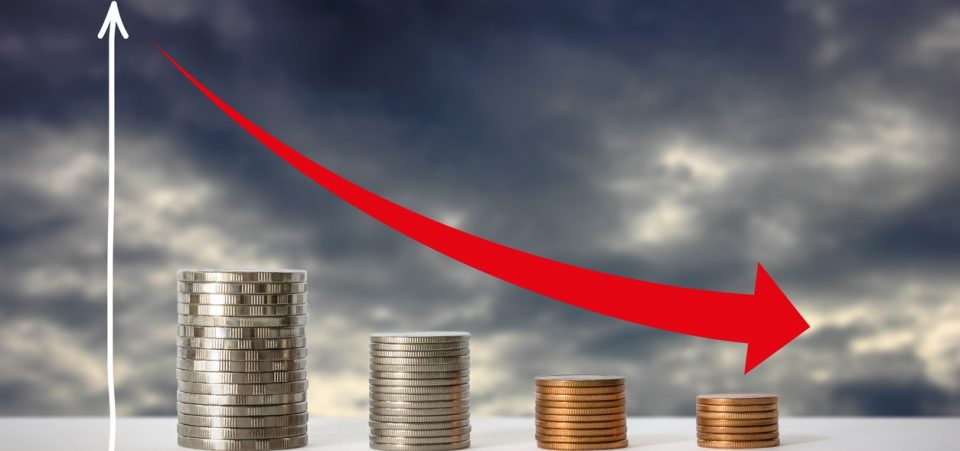Personal Saving Rate Foretells Recession Ahead for the U.S.
If you want to know where the U.S. economy is headed, look at how Americans are doing. If they are struggling, a recession could be nearing. If they are feeling great and spending, economic growth could be ahead.
Sadly, as it stands, we see Americans struggling, and this foretells a recession ahead.
Look at the personal saving rate for Americans on the chart below. Currently, Americans are saving just 3.6% of their disposable income.
Looking at the chart, it’s not wrong to say that American savings have collapsed. In early 2015, the personal saving rate was around 6.5%. If you do the simple math, the U.S. personal saving rate has collapsed by more than 44% in just a matter of a few years. If you look at the even longer term, in the early 1980s, Americans saved roughly 12% of their disposable income.
This is not a good sign if you are hoping for economic growth.
Why does the saving rate matter? If Americans are saving less, down the road they won’t have money to buy things they want. Also, it tells us that they could be squeezed, forced to pay more for their expenses.

Food Stamp Use Remains Staggeringly High
There’s one more thing not talked about much in the mainstream media, and politicians don’t like to touch this subject either—the usage of food stamps. As of July there were 41.2 million Americans, or 20.49 million households, using food stamps. (Source: “Supplemental Nutrition Assistance Program,” United States Department Of Agriculture, October 6, 2017.)
What’s worse is that the number of Americans using food stamps hasn’t really declined since the last recession. In 2008, there were just 28.22 million Americans using food stamps.
In other words, food stamp use remains 46% higher than in 2008.
Bringing in some more perspective, the number of Americans using food stamps is more than the size of Canada’s entire population. Again, this is not good. A large number of Americans using food stamps suggests that conditions remain dire. 41.2 million Americans amounts to roughly 13% of total U.S. population.
Let me ask this: What are the chances that a household that can’t even afford to bring food to the table could buy a new house or car? It’s not rocket science. The chances of this happening are very low.
U.S. Economic Outlook: Could U.S. Economy Go Anywhere Without Consumers?
Dear reader, it can’t be stressed enough that the stock markets have created an illusion that everything is great in the U.S. economy. This is not the case. Do not get too complacent.
The list of indicators suggesting economic slowdown ahead for the U.S. economy is getting bigger every day. As the American saving rate is dropping and food stamp use remains elevated, we also see consumer bankruptcies increasing, foreclosures rising, and several other consumer statistics going the wrong way.
Know that the U.S. economy cannot go far with consumers struggling. Looking at all this, I can’t help but be pessimistic about the U.S. economy.
I will end with some food for thought. The Federal Reserve has made it very clear that it will be raising rates going forward. We now see economic data turning dismal. Will the Fed look at this and stop raising rates?






